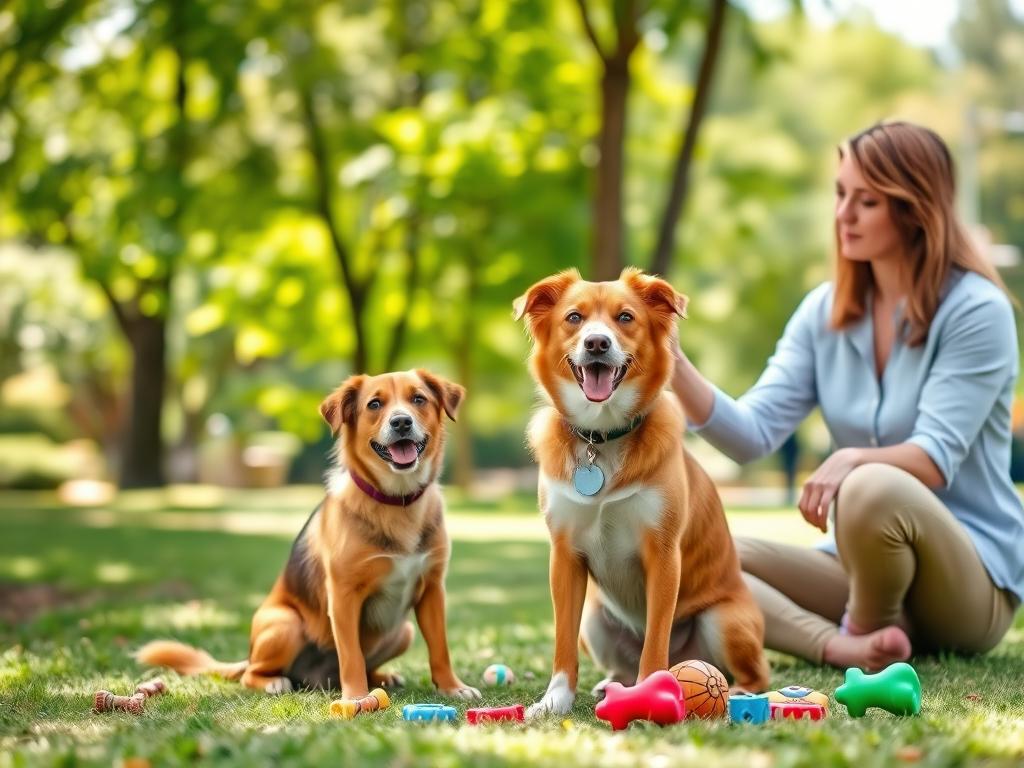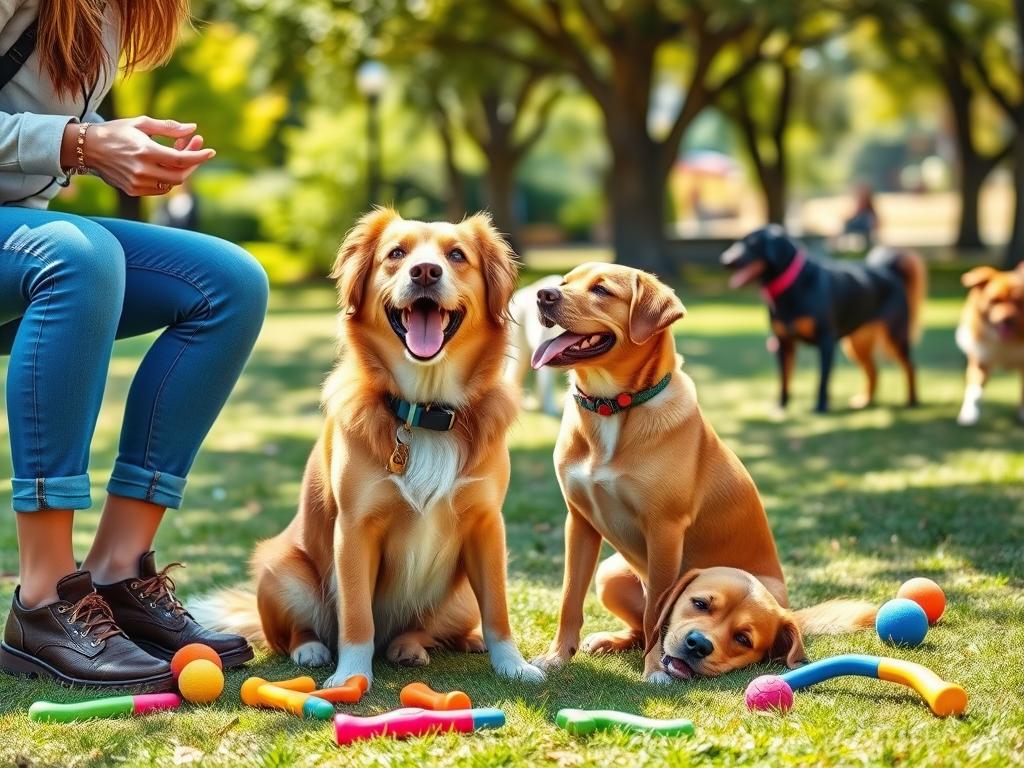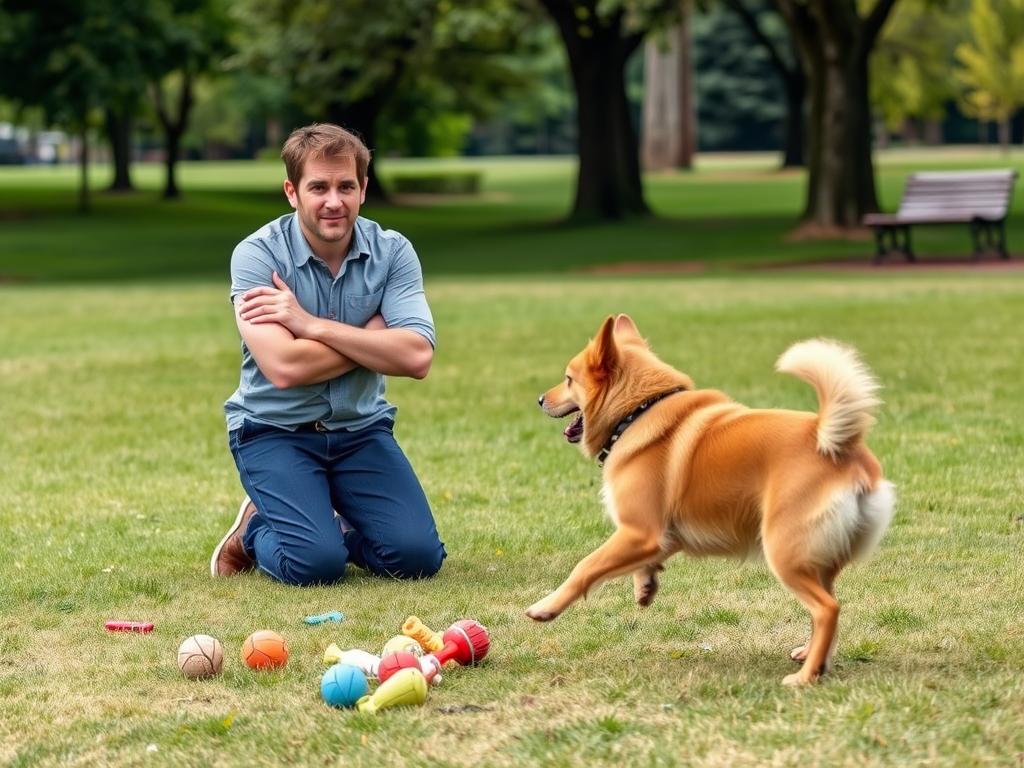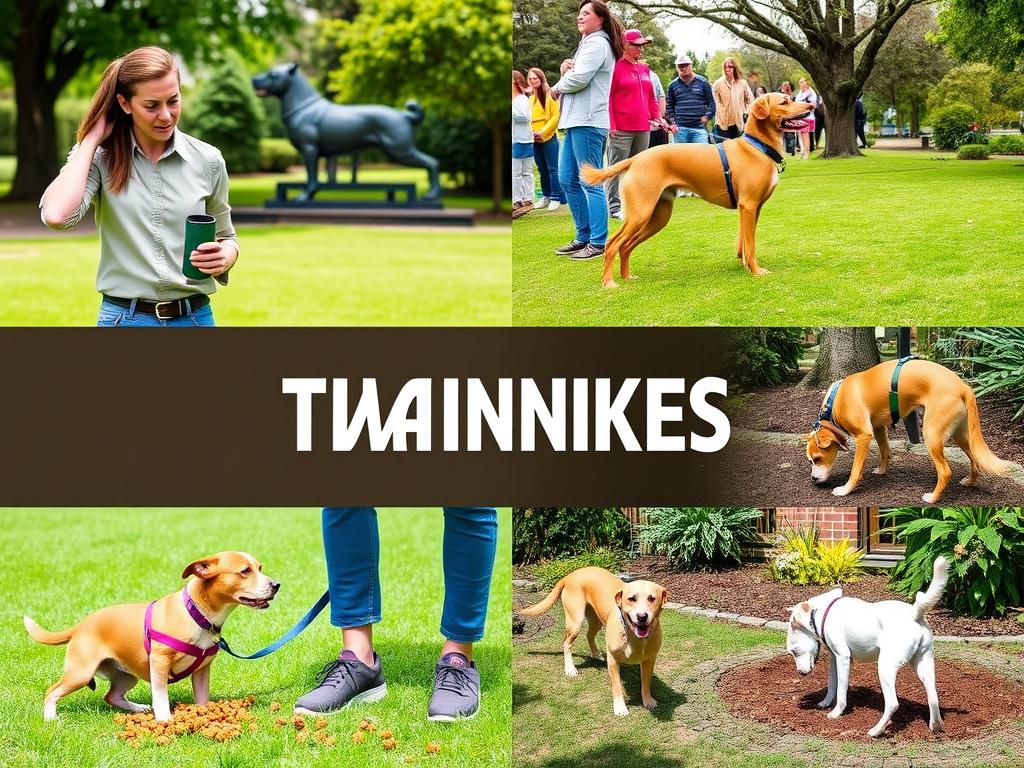Did you know that one in three pets will get lost at some point during their lifetime? For dog owners, this startling statistic underscores the importance of responsible pet care and attention. Providing the right care for our furry friends not only enhances their quality of life but can also significantly extend their longevity. Implementing effective dog care tips is crucial, as lean dogs are known to live longer and develop age-related illnesses later in life than those in less ideal body conditions.
In this article, we will share 10 Golden Tips for Proper Dog Care that encompass essential dog health tips, from understanding your dog’s specific needs to maintaining a healthy diet, regular exercise, and grooming. Whether you’re a new dog owner or have been enjoying the companionship of a canine for years, this comprehensive guide offers valuable pet care advice to foster a loving and responsible relationship with your dog.
Key Takeaways
- Understanding your dog’s breed is vital for tailored care and support.
- Proper nutrition is the foundation of your dog’s overall health and longevity.
- Regular exercise prevents obesity and keeps your dog mentally stimulated.
- Routine veterinary visits help catch potential health issues early.
- Consistent grooming is essential for your dog’s appearance and well-being.
- Training strengthens your bond and provides your dog with structure.
- Creating a safe home environment is crucial to ensuring your pet’s safety.
Understand Your Dog’s Breed and Needs
Understanding your dog’s breed is a fundamental step in ensuring proper care. Different breeds possess unique characteristics that influence their needs, behavior, and overall health. By diving into the details of dog breed characteristics, owners can grasp the importance of size, energy levels, and other traits that contribute to a dog’s well-being. This knowledge plays a pivotal role in meeting both physical and emotional needs, leading to a vibrant and fulfilling life for your canine companion.
Research Breed-Specific Traits
Each dog breed has specific traits that dictate their personality, behavior, and requirements. High-energy breeds, such as Border Collies, thrive on rigorous daily exercise, while smaller and calmer breeds may require less physical activity. Knowing these breed-specific traits assists in addressing their individual needs effectively. Owners can create tailored care plans that incorporate suitable exercise, playtime, and socialization based on their dog’s personality.
Importance of Size and Energy Levels
Size and energy levels significantly impact pet wellness tips for dog care. A large breed may require more space to roam and play compared to a toy breed. Understanding dog needs related to their size can help in planning appropriate living spaces and exercise regimens. Additionally, larger dogs might need special considerations for feeding and training. Recognizing these factors ensures a healthy and enriched life for your furry friend.
Nutrition: The Foundation of Health
Nourishing your dog properly is key to ensuring their overall well-being. Selecting the right dog food tailored to their age, size, and breed sets the stage for a balanced diet. Paying attention to dog nutrition tips can make a significant difference in your pet’s health. It’s essential to recognize the importance of meeting their specific nutritional needs, especially with the wide variety of healthy dog food available today.
Choosing the Right Dog Food
When choosing dog food, look for brands that meet AAFCO standards for complete nutrition. High-quality brands like Hill’s, Purina, and Iams provide balanced options featuring the six essential nutrients: water, carbohydrates, vitamins, minerals, fat, and protein. Ensure that the dog food’s protein content aligns with AAFCO recommendations – at least 22% for growth and 18% for maintenance.
Understanding Feeding Guidelines
Establishing a regular feeding routine helps keep your dog healthy and prevents obesity, which can lead to serious health complications. Adult dogs generally require one or two meals a day. Monitoring portion sizes is crucial. Consult with your veterinarian to help determine the best feeding guidelines tailored to your dog’s needs.
Special Diets for Medical Conditions
Some dogs may require special dietary needs due to medical conditions. These diets typically emphasize high-quality protein sources and essential fatty acids, which support inflammation management and skin health. Regular consultations with your veterinarian ensure your dog’s unique health needs are met through proper nutrition.
| Nutrient | Importance | Sources of Healthy Dog Food |
|---|---|---|
| Protein | Builds and repairs tissues; provides energy | Chicken, beef, fish, eggs |
| Fats | Concentrated energy source; supports skin and coat health | Flaxseed oil, chicken fat, fish oil |
| Carbohydrates | Supply energy; aid digestion | Brown rice, sweet potatoes, peas |
| Vitamins and Minerals | Support overall health and immune function | Fruits, vegetables, fortified commercial foods |

Regular Exercise: Keeping Your Dog Fit
Maintaining regular exercise is essential for your dog’s overall well-being. A proper routine not only supports physical fitness for dogs but also contributes to their mental health. Engaging in daily walks and varied play activities ensures that your dog remains active, helping to prevent obesity—a concern that affects an estimated 54 percent of dogs in the U.S. Finding time for these activities fosters a strong bond between you and your furry friend.
Daily Walks and Playtime Activities
Daily walks play a significant role in fitness for dogs. Aim for a minimum of 30 minutes of aerobic exercise coupled with dog play activities. Options like fetch, interactive games, and even Doga can all keep your dog engaged. You can introduce indoor exercise alternatives, such as creating food puzzles that stimulate their mind while helping to burn off calories during inclement weather. Short, energetic bursts can benefit dogs like Pugs and Bulldogs, who should avoid strenuous outdoor activities in hot climates.
Socialization with Other Dogs
Socialization plays a crucial part in your dog’s exercise routine. Interaction with other dogs helps boost emotional stability and encourages positive behavioral patterns. You can incorporate this into your dog exercise tips by arranging playdates or participating in community dog events. Energetic breeds, such as Terriers, need at least 60 minutes of exercise daily, and a mix of social engagement and physical activity can greatly enhance their quality of life.
Understanding Your Dog’s Exercise Requirements
Recognizing your dog’s unique exercise needs is vital for effective care. Different breeds have varying requirements; for instance, herding dogs may benefit from up to two hours of vigorous activity each day. Understanding these specifics helps avoid obesity and behavioral issues. Always consider factors such as age and breed type when planning routines. Puppies generally exhibit bursts of energy and require short play sessions, while older dogs may enjoy more leisurely walks. Regular monitoring of energy levels will be key in adapting their exercise regimen appropriately.
For more information on enhancing your dog’s behavior around guests through strategic exercises and training, check out the complete dog exercise tips.
| Dog Breed | Recommended Daily Exercise | Tips for Exercise |
|---|---|---|
| Terriers | At least 60 minutes | Interactive games and playdates |
| Bulldogs | Light exercise; avoid heat | Short walks and indoor activities |
| Pugs | Moderate exercise; watch for heat | Short bursts of playtime indoors |
| Herding Dogs | Up to 2 hours | Rigorous activities and agility training |
| Sighthounds | Short, intense bursts | Fast sprints and safe areas to run |
Grooming: Maintaining a Clean Coat
Proper grooming plays a crucial role in the overall health and hygiene of your dog. Implementing important dog grooming tips can enhance your dog’s comfort, appearance, and well-being. Regular grooming helps in maintaining the dog’s coat, prevents various skin issues, and allows for early detection of potential health problems. Each breed has its unique requirements, making it essential for dog owners to adapt grooming techniques accordingly.
Bathing and Brushing Techniques
For a Golden Retriever, bathing every two months with a dog-specific formula is advised. While bathing, using gentle strokes and ensuring thorough rinsing enhances coat cleanliness. Brushing should occur daily to maintain the dog’s coat and prevent mats and tangles. A coat conditioner can be beneficial in loosening knots before brushing. The right products designed for dogs are vital since their skin pH differs from that of humans.
Nail Trimming Tips
Nail trimming holds significant importance in grooming dogs, especially for larger breeds with dense fur around their paws. Regular inspections during grooming sessions help prevent overgrown nails, which can cause discomfort and health issues. Owners should take the time to introduce their dogs to nail trimming gradually, ensuring a positive experience that fosters cooperation. Learning to check the length of the nails will help maintain a comfortable foot structure.
Addressing Common Grooming Issues
Common grooming issues may arise, leading to skin irritations or discomfort. Using appropriate techniques during baths can minimize these problems. Always ensure the grooming tools are suited to your dog’s needs. Regularly inspecting your dog’s coat while brushing aids in detecting skin conditions or pests such as fleas and ticks. A consistent grooming routine can significantly enhance a dog’s overall hygiene and comfort.
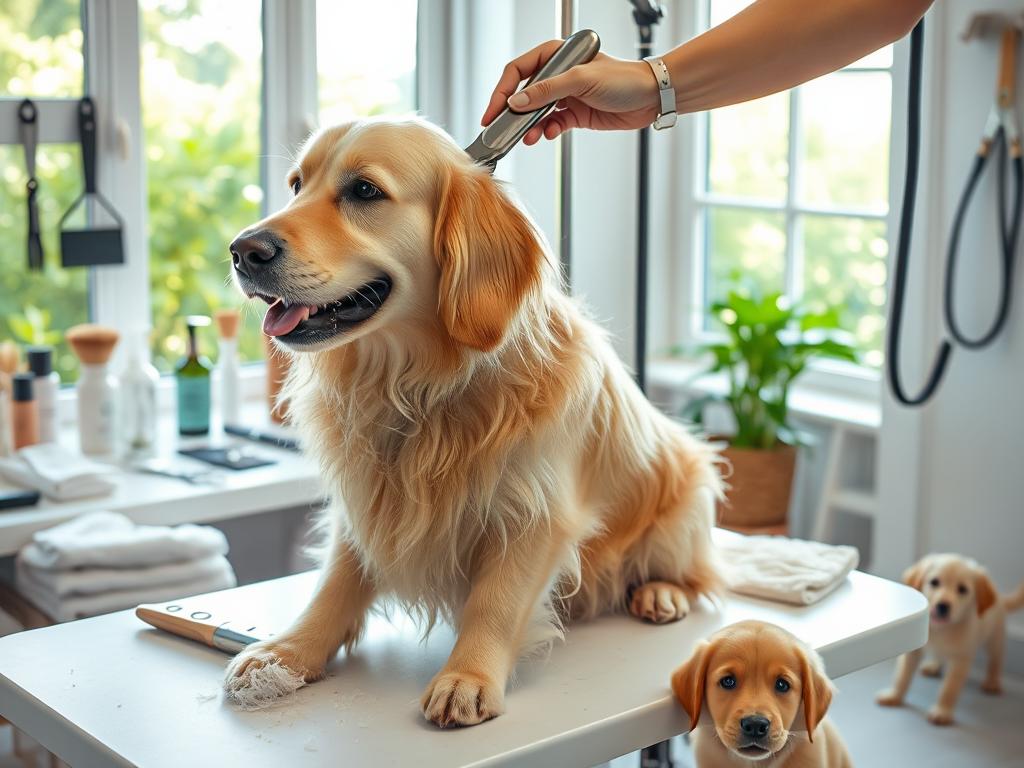
| Breed | Bath Frequency | Brushing Frequency | Special Considerations |
|---|---|---|---|
| Golden Retriever | Every 2 months | Daily | Do not shave fur; it regulates temperature |
| Shih Tzu | Every month | Several times a week | Maintain specific haircuts to prevent eye irritation |
| Bloodhound | Every month | Weekly | Regular swimming for exercise; consider weighted vest |
| West Highland White Terrier | Every 6 weeks | Weekly | Watch for skin issues related to yeast growth |
By following these guidelines and keeping up with regular grooming sessions, dog owners can ensure their pets remain healthy, comfortable, and happy.
Veterinary Dog Care: Prioritize Regular Check-ups
Regular veterinary care is essential in maintaining your dog’s health and preventing potential issues. Annual dog health check-ups allow veterinarians to monitor your pet’s overall condition and catch any concerns early. It is crucial for dog owners to stay informed about their pet’s healthcare needs, which primarily revolve around three key areas: vaccinations for dogs, routine health screenings, and dental care for dogs.
Importance of Vaccinations
Vaccinations for dogs protect against various diseases, which can have serious consequences. Puppies typically require vaccinations every few weeks until they are 16 to 20 weeks old. After that, adult dogs should receive annual boosters or follow the veterinary schedule recommended to maintain immunity. Staying up-to-date with vaccinations helps prevent outbreaks of diseases that can be detrimental to your pet’s health.
Routine Health Screenings
Routine health screenings involve regular check-ups that help dogs maintain a long and healthy life. These examinations often include physical assessments, blood tests, and urinalysis to identify any underlying health issues. For senior dogs, having check-ups every six months becomes increasingly important as they are more susceptible to age-related conditions. This proactive approach aids in the timely management of health concerns.
Dental Care Basics
Dental care for dogs is an often-overlooked aspect of pet health. Many dogs experience dental disease by the age of three, which can lead to severe infections and pain. Owners should incorporate brushing into their dog’s routine and consider professional cleanings as needed. Regular dental check-ups can prevent issues and improve your furry friend’s quality of life.
| Service | Average Cost |
|---|---|
| Office visit/physical examination | $40 – 90 |
| Panel of screening bloodwork | $50 – 200 |
| Urinalysis | $20 – 60 |
| Core vaccines (each) | $20 – 45 |
| Microchip placement | $20 – 75 |
| Nail trim | $10 – 20 |
Training: Building a Stronger Bond
Training serves as a cornerstone for fostering a rewarding relationship between you and your dog. Employing positive reinforcement techniques is essential for encouraging desired behaviors while strengthening the emotional bond. Utilizing treats and praise effectively enhances dog command training, allowing for a more harmonious connection.
Positive Reinforcement Techniques
Implementing positive reinforcement for dogs is a proven strategy that promotes good behavior through rewards. This approach not only teaches commands but also builds trust and affection between you and your pet. By rewarding your dog every time they exhibit the desired behavior, they will feel more motivated to repeat it.
Basic Commands Every Dog Should Know
Mastering basic dog commands is vital for ensuring safety and enhancing communication. Commands like “sit,” “stay,” and “come” should be prioritized in dog training sessions. Consistent practice of these commands helps your dog understand expectations while contributing to a more structured environment.
Socialization Training Musts
Socialization is critical in your dog’s development, enabling positive interactions with other animals and humans. Consider enrolling your dog in socialization classes to help them become accustomed to different situations, which is key to preventing behavioral issues. Engaging in new environments and meeting various individuals will enhance their adaptability.
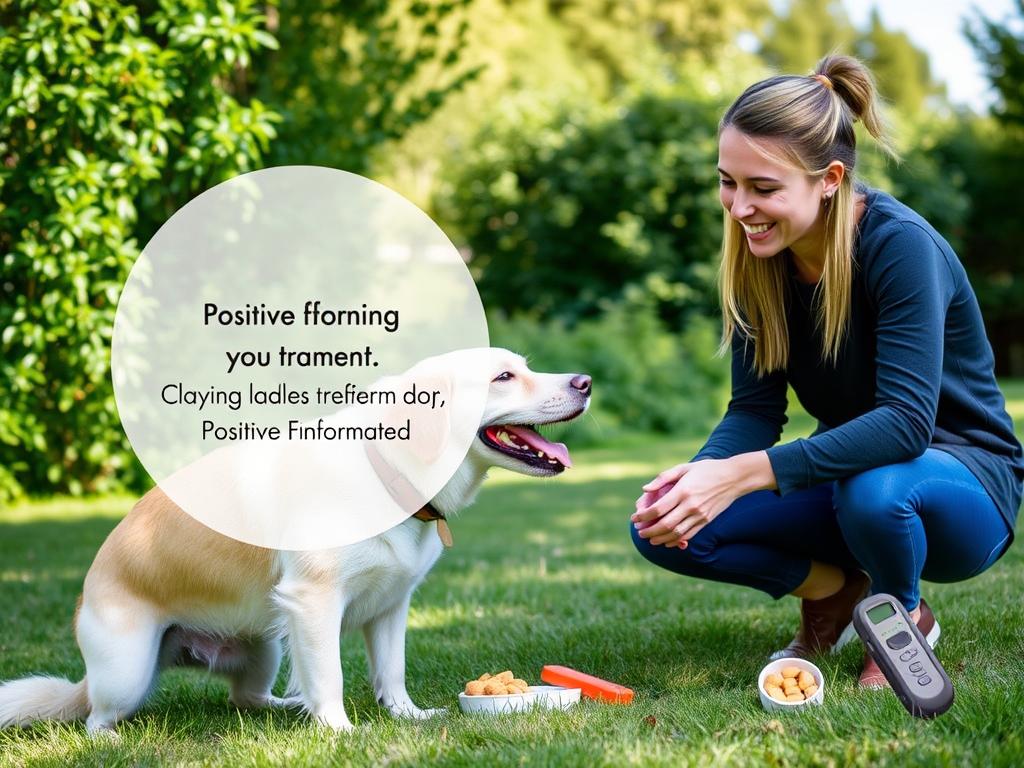
Training fosters a sense of security and stability through routines. Activities like playtime and grooming not only provide joy but also enrich your dog’s experience and solidify your bond. To explore additional ways to connect, visit ways to bond with your dog.
Creating a Safe Home Environment
Ensuring a secure environment for your dog begins with thorough pet-proofing. This crucial step eliminates hazards and contributes to your dog’s overall safety. Achieving peace of mind requires understanding how to implement effective dog safety tips.
Pet-Proofing Your Space
To start pet-proofing homes, secure cleaning products and items that could be toxic to dogs, such as certain plants and foods. Establish clear boundaries and designate areas where your dog can roam freely without encountering dangers. This includes keeping hazardous items like cords, medications, or batteries out of reach. Providing a spill-proof water bowl in their designated space helps maintain cleanliness while ensuring hydration.
Identifying Hazardous Substances
Regularly assess your household for potential risks. Female dogs may exhibit anxiety during their heat cycle, while senior dogs and puppies can require special consideration regarding their emotional security. Understanding breed-specific behaviors can further inform your efforts in creating safe spaces for dogs. Be mindful of common stress signals such as yawning or pacing, which can indicate anxiety levels in your furry friend.
Safe Spaces for Your Dog
Creating cozy areas in the home contributes greatly to a dog’s sense of security. During stressful times, encouraging your dog to retreat to these safe spaces not only helps establish them as a refuge but can also be positively reinforced through treats and praise. Consider soft bedding and familiar scents to increase comfort levels. Activities such as puzzle toys and Snuffle Mats can keep your dog mentally stimulated while they enjoy their safe space.
For additional insights on preparing an environment for pets, refer to the relevant guide. Building a calm and serene atmosphere at home significantly contributes to your dog’s emotional well-being. Adhering to effective dog safety tips will lead to a safer, more enjoyable living space for both you and your canine companion.
Understanding Canine Behavior and Communication
Gaining insight into dog behavior is essential for any pet owner looking to deepen their relationship with their furry companion. Dogs communicate primarily through body language, vocalizations, and facial expressions, which offer vital dog behavior insights to their emotions and needs. For instance, a wagging tail is often seen as a sign of happiness, especially when wagged to the right. Conversely, when a dog displays leftward tail movements, it may indicate negative feelings or stress. Recognizing these non-verbal cues helps owners respond more appropriately to their dogs’ emotional states.
Common Dog Behaviors Explained
Identifying common dog behaviors, such as cowering or a play bow posture, can reveal much about a dog’s emotional health. A dog with a hunched posture may be expressing fear, while a play bow is a clear invitation to engage in play. By understanding these signals, owners can actively promote a sense of security and happiness for their pets. Additionally, behaviors like yawning and lip-licking can indicate stress or discomfort. It’s crucial to take note of these signs of recognizing dog anxiety, as they can lead to proactive measures to support your pet’s emotional well-being.
Recognizing Signs of Stress or Anxiety
Being attuned to specific stress indicators can greatly enhance the owner-dog relationship. Dogs may show signs of anxiety through various actions, from raised hackles to avoiding eye contact. Tail position also plays a significant role; a low tail signals fear, while a high tail often indicates confidence. Establishing a strong human-dog connection involves responding to these behavioral cues with patience and understanding. Engaging in regular training, playtime, and bonding activities fosters an environment of trust, encouraging a blossoming partnership that benefits both the dog and owner.








